Wimbledon Common has a curious history that could only exist in England! At the height of Victorian culture a most remarkable occurrence took place. John Spencer, 5th Earl Spencer, the lord of the manor at Wimbledon due to his ownership of Wimbledon Manor (now a Hotel Du Vin), attempted to enclose the common for a large park, house and gardens and building project. In what has become one of the most important decisions in common land usage, his private bill was refused. In 1871, within ten years of the decision, a board of conservators was established to assume ownership of the common with a mandate of protection. Yes, this is the same Spencer family which gave the world Princess Diana (daughter of the 8th Earl Spencer) and of course Sir Winston Churchill, grandson of the 7th Duke Marlborough, John Winston Spencer-Churchill. With some understanding of the family tree, it is momentous that a decision was taken to create common land from a Spencer manor!
Against this backdrop, London Scottish GC was officially formed in 1865, the third oldest club in England and the host of the inagural Varsity match between Oxford and Cambridge in 1878. Led by Horace Hutchison, one of the most under-rated golfers in history, Oxford easily claimed victory. The membership of the club was made up of London Scottish Rifle Volunteers who were stationed on the common. The same year an Act of Parliament created Wimbledon Common (1871) as a completely separate entity from adjacent (across the A3) Richmond Park, the 7 hole course was extended to 18 by Tom Dunn. A few years previously golfers living within 3 miles of the famous windmill were permitted to join the club. Very quickly it became clear to the disenfranchised town members that a second club would be the only viable solution to the acrimonious relations; thus was born Royal Wimbledon GC. Yet, sharing the course with LSGC was never going to be satisfactory. In 1908 Willie Park Jr was called upon to build a new course on the nearby Warren Farm owned by the colourfully named Admiral the Hon Sir Reginald Aylmer Ranfurly Plunkett-Ernle-Erle-Drax!
It was also in 1908 that Wimbledon Common GC (which starts on the original 12th hole) was established and to this day the common is shared with London Scottish. With their respective houses in very different parts of the common I can only presume the two clubs must work closely together to ensure all runs smoothly. Incidentally, let us not forget that Wimbledon is a tennis town and the All England Lawn Tennis Club is a short walk from the common, as is the centre of Wimbledon. Coombe Hill GC is sandwiched between the common and the rather large Richmond Park. One could do much worse than the very attractive area of Wimbledon if living within 10 miles of Hyde Park Corner is a priority.
Still not satisfied, the members engaged Harry Colt to design a course to be built by Franks Harris Bros and this was opened in 1924. Colt was extremely busy in the London area during this time; Sunningdale New (1923), Wentworth East (1924) and Tandridge (1924) were all completed about the same time as Royal Wimbledon. Much as was the case at Sunningdale Old, the essence of Parkís design is gone, however, the Colt redesign relied substantially on Parkís work. As many as eight holes use Parkís routing; the current 7, 9-11 and 14-16. After WWII the 9th, 17th & 18th holes were altered and in recent years the 1st and 18th were altered by Hawtree.
Colt Routing


Driving around the common to the club one very much gets a sense that a special course is on hand. This excitement is intensified once covering the passage between the house and pro-shop. The house and rather large grounds near the putting green were once owned by Roger Wethered, a long time member of the club. In recent years part of the grounds were converted for a small housing development down the first fairway, making the dreaded and all too common first tee slice rather problematic. Enter Mr Hawtree; he pushed the fairway left and created a new green. While a good hole, it is rather too tight for an opener. Given the mandate to stay away from the unseen houses on the right, it is curious that a large tree positioned to the left not far off the tee should remain. It is just the sort of tree one wouldn't want to chop, but the golf must come first. While not completely satisfactory, the first does hint at good things to come.
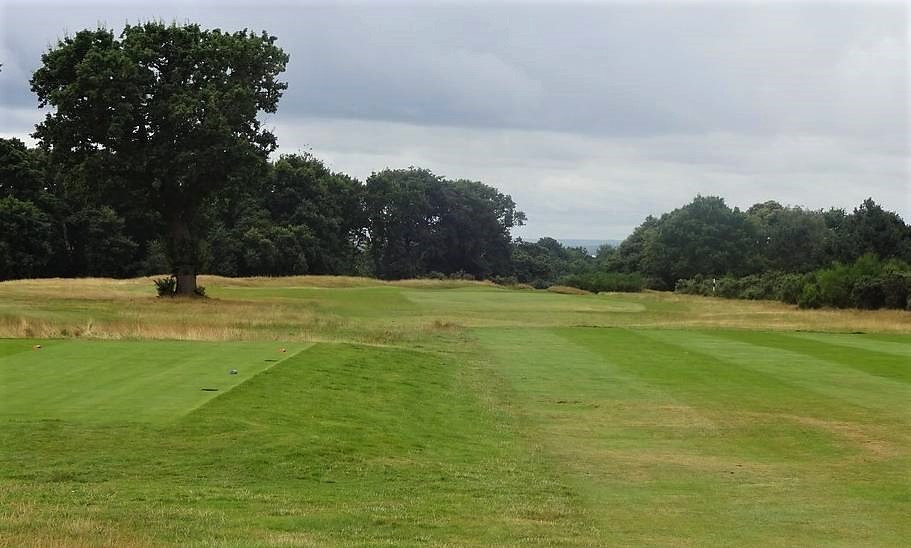
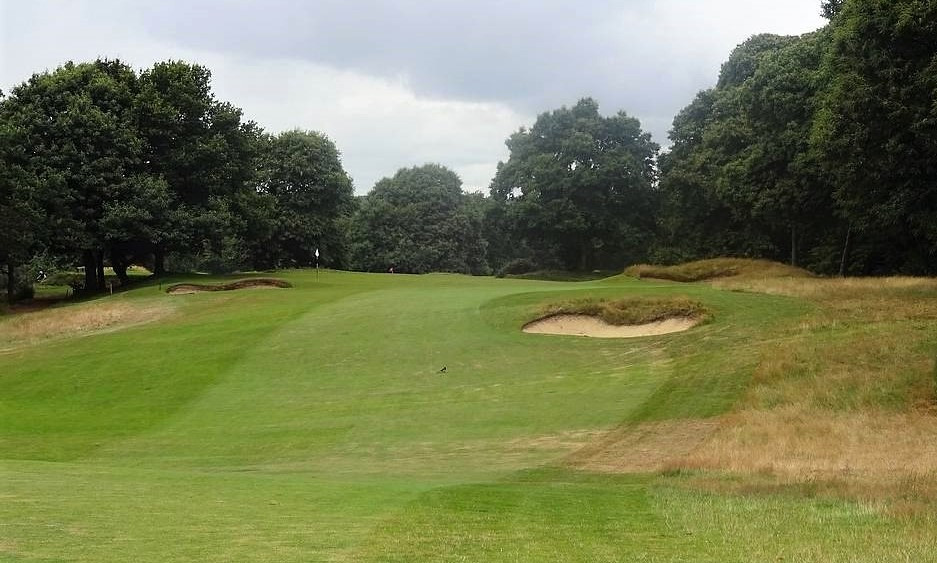
#2.
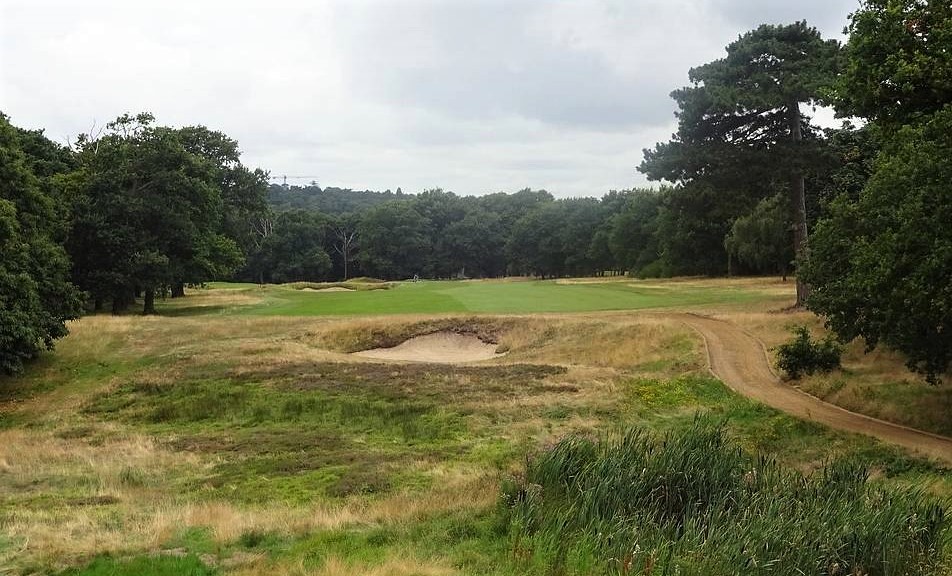
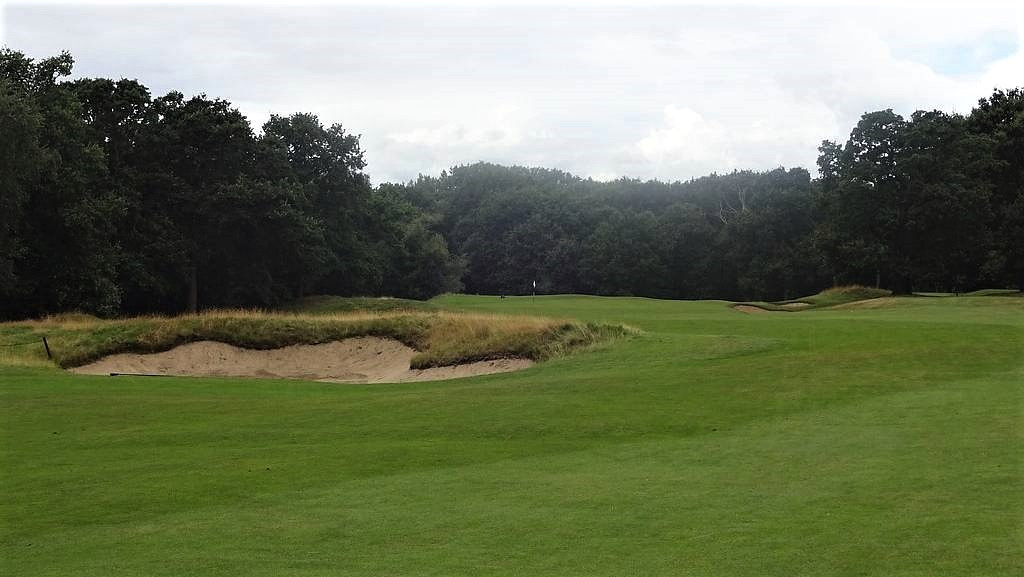
The one feature of the course presentation which leaps out is the ample short grass around the greens, yet tempered with some areas of rough which leaves the result of leaked approaches somewhat in the hands of luck. Some may feel this philosophy is not in keeping with the exacting nature of the game at the highest level, but I am firmly on board with this approach. Missing the target should not, in most cases, spell instant death. The off-line areas should offer hope and often deliver forgiveness and that is exactly what we get at Royal Wimbledon.
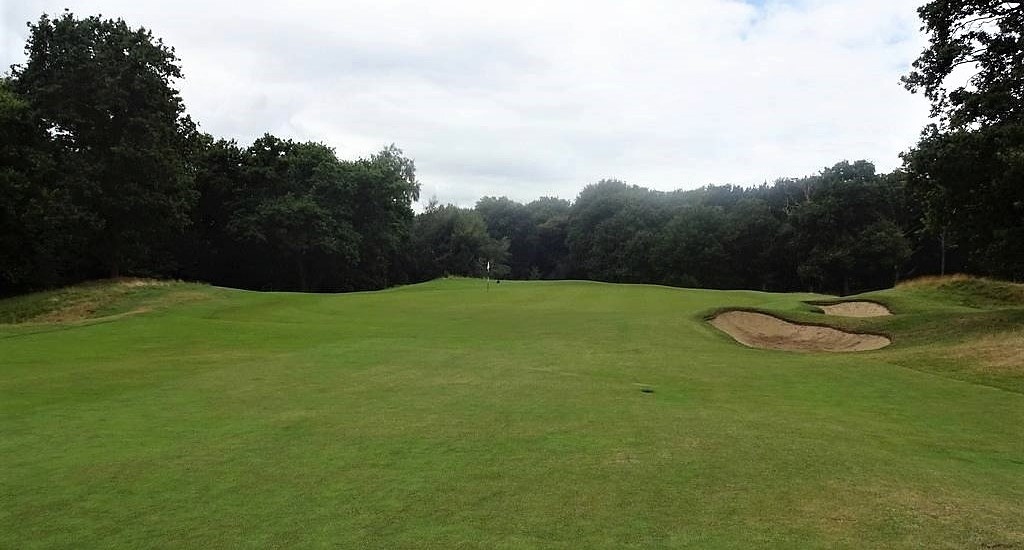
We now plunge to the parkland section of the course. #s 3, 4 and 14-16 are on distinctly different terrain (the lower part of the property) and the bunkering strongly reflects this dichotomy. As a set, I am not sure these holes work well aesthetically. Not poor holes by any means, however, perhaps more should be done to reduce the stark contrast between the high and low holes.

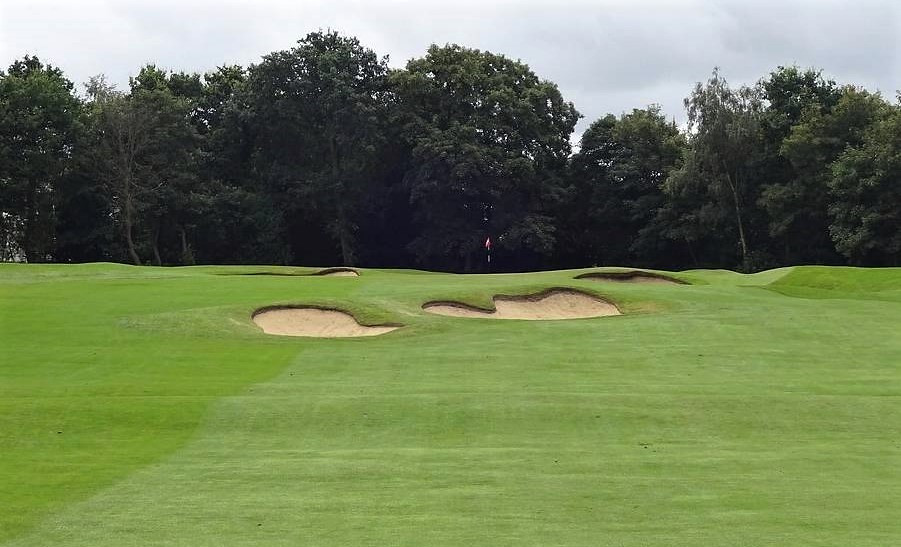
Another limiting aspect of the parkland holes is they all start and finish on high ground after playing through a valley; the uphill approach to #4.
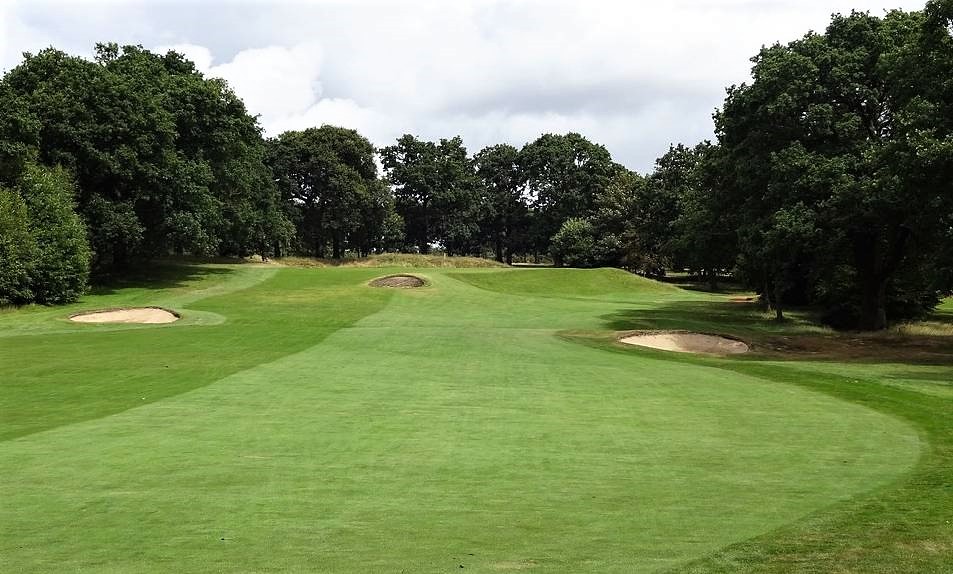
More to follow.
Ciao